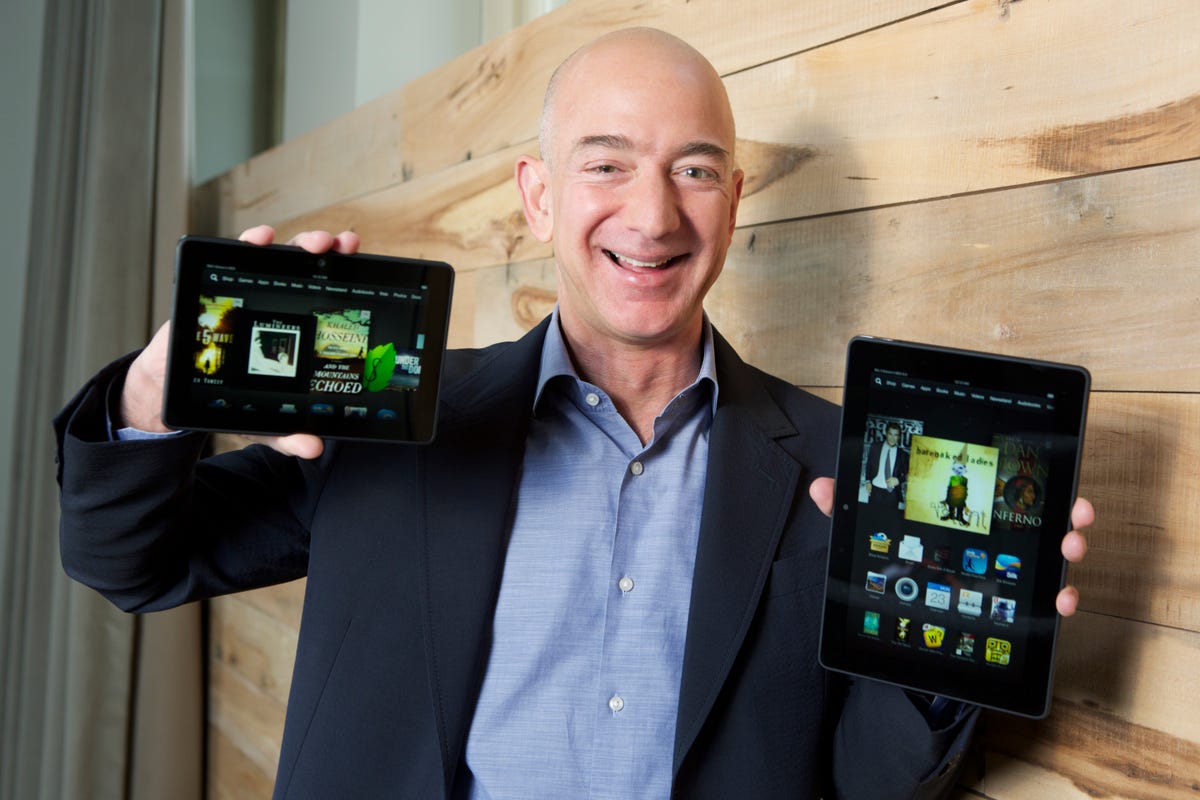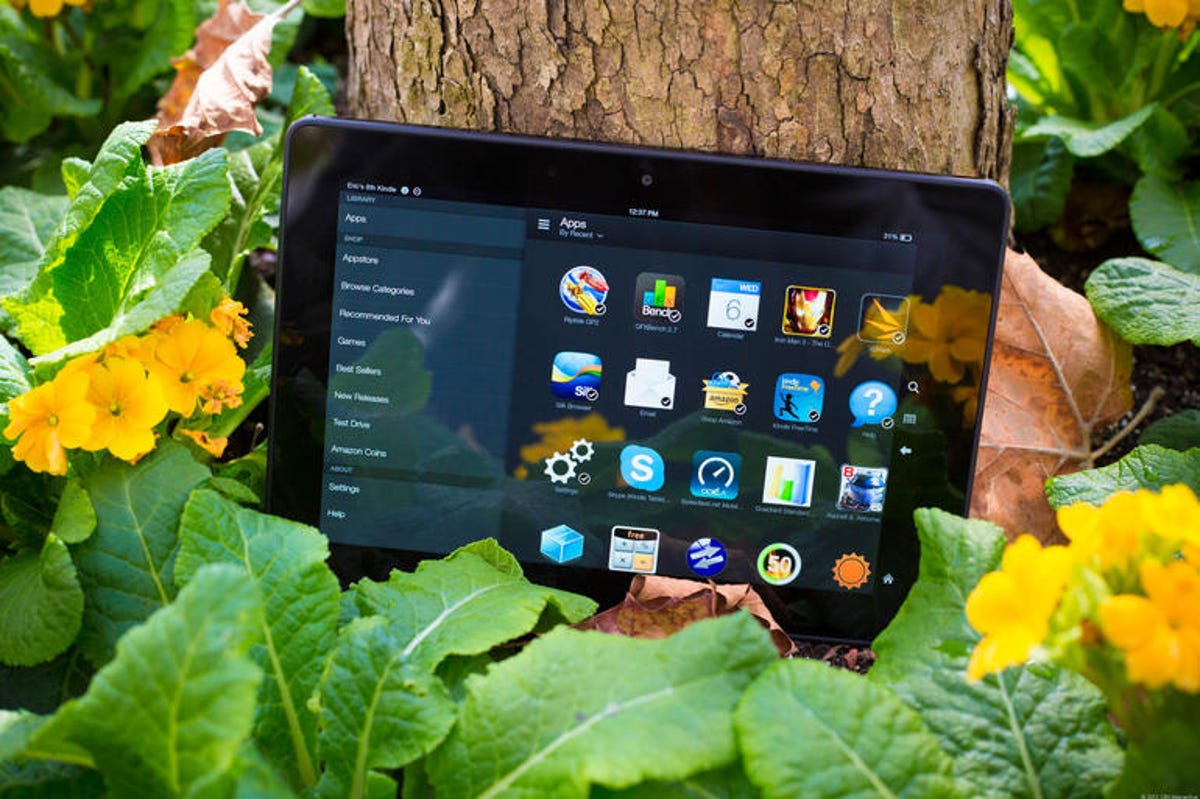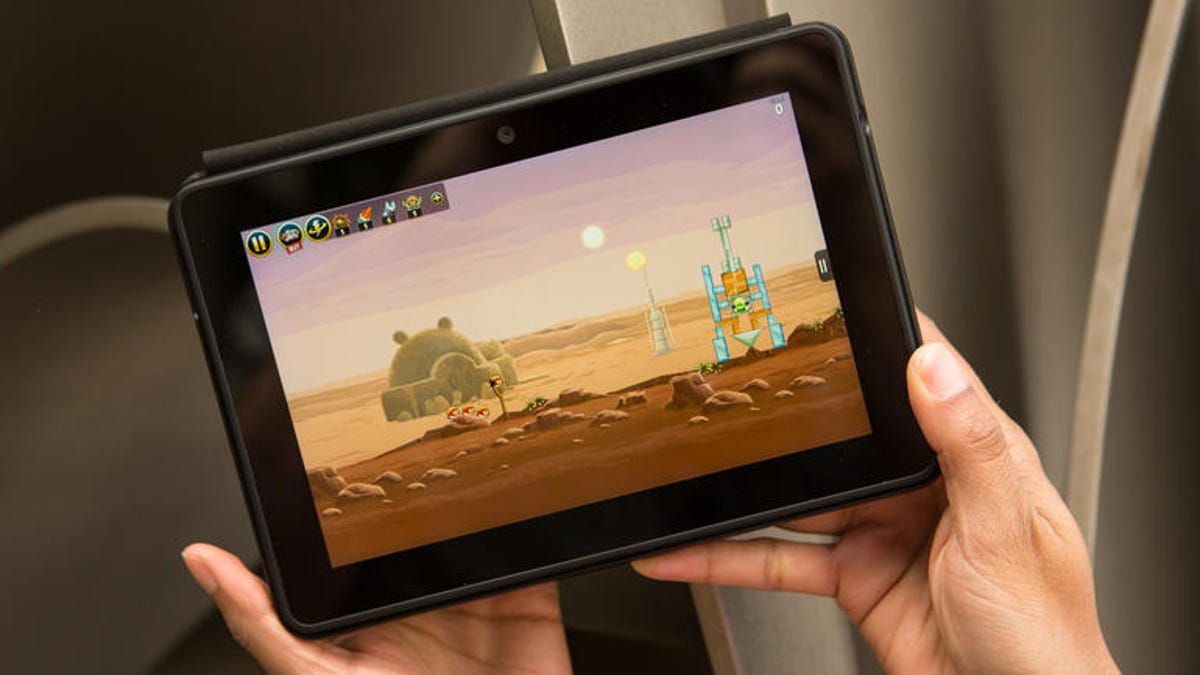
CNET
After years of rumors, speculation, and back-alley whispers, Amazon may finally be ready to unveil its first smartphone . The time couldn’t be better for Amazon to enter the fray.
Related Links
- Amazon Phone rumor roundup: Everything you need to know
- Rumored Amazon smartphone to call on 3D
- Amazon smartphone rumored to go on sale in September
- Amazon phone coming in 2014, with 6 cameras
Today’s Amazon is better poised to tackle the smartphone space for a variety of reasons. For starters, the landscape is more friendly to consumers and new handset players in 2014 than it was two years ago when the chatter about an Amazon-branded phone first started up.
Thanks in part to T-Mobile, carrier contracts are no longer the rule, and prices, especially for unlocked phones, are as competitive as ever. Amazon also has proven that it can compete on the hardware side . And then there’s Amazon’s monster library of content, which will satisfy apps-hungry customers.
What Amazon’s smartphone would look like
First, let’s talk about the purported phone itself. Assuming the latest rumors are accurate, Amazon’s “Kindle Phone” could feature a 4.6-inch 720p display, a Qualcomm Snapdragon processor, a 13-megapixel rear camera, and 2GB of RAM. Nothing top of the line, mind you, but it should be able to stand up to the Moto G or Nexus 5.
One of the more interesting details to surface about the Amazon handset is that it could pack six cameras. In addition to the standard rear and front-facing sensors, the Amazon smartphone is rumored to have four more cameras to track the user’s eyes. Allegedly, the phone will constantly adjust the position of images on the display, creating a 3D-like effect.
While I fully expect the build quality of Amazon’s smartphone to be solid like the Kindle Fire HD , the internal specifications may ultimately prove to fall somewhere in the middle of the pack. Not that this matters much with today’s robust mid-range smartphone.


James Martin/CNET
As for OS, a modified version of Android will reportedly power the Kindle Phone, similar to what we see in Amazon’s line of Kindle Fire tablets. Now on it’s third release, the Fire OS that we see in tablets is clean, intuitive, and provides easy access to apps, games, and, of course, Amazon content.
Similarly, the interface used on the new Fire TV is close enough to the Kindle Fire experience that it feels just as intuitive. Adjusted for the smaller smartphone screen, I imagine a Fire OS experience based on either the TV or tablet will be simple and straightforward. The software works well, so I would hope Amazon doesn’t stray far from what we’ve already seen.
Perhaps more important than hardware is the price of the device. Looking at how Amazon prices its tablets and Fire TV, I suspect the smartphone will edge hit the lower end of the spectrum for what it delivers. If I were to guess, the Amazon smartphone will cost between $200 and $250 without any contractual agreements. If it were to cost much more, customers may opt for a more familiar Nexus smartphone from Google instead.
It wouldn’t surprise me if there was some incentive tied to the device where customers with an Amazon Prime account could save a bit of money. Taking things one step further, we could even see a “special offers” version of the phone where users save a bit of money up front in exchange for advertisements on the lock screen. The same is already done for Kindle Fire tablets.
We’ll likely see the handset sold in a direct-to-consumer manner from Amazon’s own website, similar to Google’s Nexus sales on its Google Play Store. As to the rest of the Kindle Phone’s distribution, that’s up in the air. In the US at least, it will need to sell with carrier support; it could also potentially appear in big box stores next to the Kindle Fire HD tablet.
The smartphone landscape
As I mentioned, the smartphone industry as a whole is much more receptive to an Amazon-branded phone in 2014 than in 2012. For instance, buyers are now primed to purchase smartphones from alternate sources. Google’s Nexus sales approach surely has a lot to do with this, but today’s savvier consumer is more attuned to buying a device from without visiting a wireless carrier.
T-Mobile’s Uncarrier initiative has also spurred a general loosening of the chokehold of strict contracts that wireless providers put on customers. And pricing wars have kept both handset costs more competitive, as low as $300 for an above-average device. Even the Moto G, which costs well under $200, is sufficient for casual users. Today, buying a phone off-contract, and buying it from a source like Amazon, don’t sound so out-there and impossible.


Sarah Tew/CNET
Amazon is a known brand
Amazon is one of the world’s most recognizable brands. The company has built up enough clout that people pay attention to their announcements, and new products are routinely met with positive reactions.
The e-retail giant’s recognition as a household name gives Amazon a chance against other smartphone brands like Apple, Samsung, and even Google’s Nexus line. Because of the efforts of companies like ZTE and Huawei, consumers are becoming increasingly aware of alternate brands. New names such as China’s Oppo and OnePlus One are garnering plenty of buzz lately. China’s Lenovo is also poised to make an entrance in the US market, now that it’s purchased Google’s Motorola.
In my opinion, Amazon could easily disrupt this growing segment of the Android market with its brand recognition, quick shipping, and easy online distribution model. Regardless of whether its smartphone is sold with a carrier or in a no-contract manner, Amazon brings a lot to the table.
Proven hardware track record
In the last few years, Amazon has evolved from content provider to product distributor and hardware manufacturer. Starting in 2007 with the first Kindle , Amazon has slowly developed into an adept hardware-maker.
It was not all that long ago that Amazon decided to go the enhanced e-book reader route with the Kindle Fire tablet. First met with a dose of skepticism, it was unclear how or why Amazon might want to move beyond the simple Kindle reader. Employing a modified version of Android that didn’t offer access to the Google Play Store, the Fire was a risky move to be sure.
Looking at the Fire OS, you would hardly guess at Android’s constant evolution. It remains largely unchanged; the idiom “If it ain’t broke, don’t fix it” comes to mind. Amazon may need to open up to Android more, though, in order to entice new users, adding Google Now, for instance.


CNET
With the Kindle Fire tablet line, Amazon has proven it can compete on hardware. In fact, the specifications of each model have rivaled the efforts of larger players in the Android game. If you buy based on the hardware specs alone, then you have to consider Amazon just as much as you might Samsung or Google’s own Nexus tablets.
Amazon has made it clear that it’s going deeper into hardware. Its Fire TV was another bold move in an already crowded space. With Apple TV , Roku , and Chromecast accounting for much of the connected TV devices, it seems a bit risky for Amazon to introduce its own product here. But, as we’ve seen with Amazon’s tablets, the 1-2 punch of excellent hardware and intuitive software, coupled with Amazon’s huge name, open the right doors.
Apps, apps, apps
As early Android adopters can attest, great hardware is nothing without apps or games. Along those lines, there is a tremendous amount of momentum building in Amazon’s mobile software division lately. With more than 200,000 apps and games to choose from today, the Appstore is a legitimate force to be reckoned with. What’s more, it’s one that often helps developers earn more buck for their bang. The Amazon developer blog routinely features success stories of higher revenue per user or more in-app purchases and engagement.
It’s not just developers who are happy with the experience; customers seem to flock to incentives such as Amazon Coins. Last summer saw Amazon introduce support for HTML5 apps in the Appstore. It was a move that didn’t have much impact in the short term but could prove to be one that pays off in the long run.
In looking at the types of apps and games available in the Amazon Appstore we find many of the top titles. Truth be told, it’s getting increasingly difficult to find a quality app in the Google Play Store that isn’t also offered by Amazon.
Customers can install web-based apps from the same place as traditional APK files and the experience is virtually seamless. In the future, it will be hard for users to discern between some Web apps and installed apps. In other words, Amazon is future-proofing its devices.
Amazon also recently announced that personal documents uploaded to Kindle libraries are now accessible via Amazon Cloud Drive. That means that Amazon smartphone owners could access their Amazon documents just as easily on that device as they could on the FireTV or Kindle Fire tablet.
Bringing it all together
Whereas Google took a “devices first, mobile content later” approach to smartphones, Amazon has been doing the exact opposite — building up its content base first, and stepping into hardware after.
By both luring app developers with tools like GameCircle and A/B testing and scooping up properties like comiXology or Goodreads, Amazon is building up a massive library of content. All it needs now is another home run content delivery tool — a device that people keep close at all times.
The biggest question, at least to me, is how Amazon plans to sell the smartphone, especially in a thick field of well-priced competitors. Specifically, will it be sold through carrier stores, like Verizon or AT&T? The alternative, and one which I hope to see, is to sell the device on Amazon’s site, and also in big box retail stores, like Target and Walmart. If anything were to dissuade someone from buying a connected product today, it’s being forced to go through a single carrier only.
If Amazon had launched its phone one or two years ago, the reaction to it would simply have been “Why?” That would have been understandable, considering that the original Kindle Fire was not even a year old. Since then, Amazon had not yet shown itself capable of more than e-book readers and enhanced digital readers, which was at least a natural extension of its online content.
The same might be said for other no-name or unproven brands. In 2012, I don’t think US customers would be as susceptible to consider phones of unproven brands, especially those they didn’t discover through a carrier. Thanks to lower price points and better smartphone quality in the middle range, buyers today are willing to take more of a risk.
Today I think the question is more of a “Why shouldn’t Amazon make a smartphone?” Sure, it’s a crowded field occupied by big name players, but that hasn’t stopped Amazon from trying to enter it, or from carving out its own space. Amazon has the hardware know-how, the history of low prices, and a brand name that buyers can trust. Three generations of Kindle Fire and one Fire TV later, and I’m confident in Amazon’s chances to make at least a small impact with a phone bearing its name.



